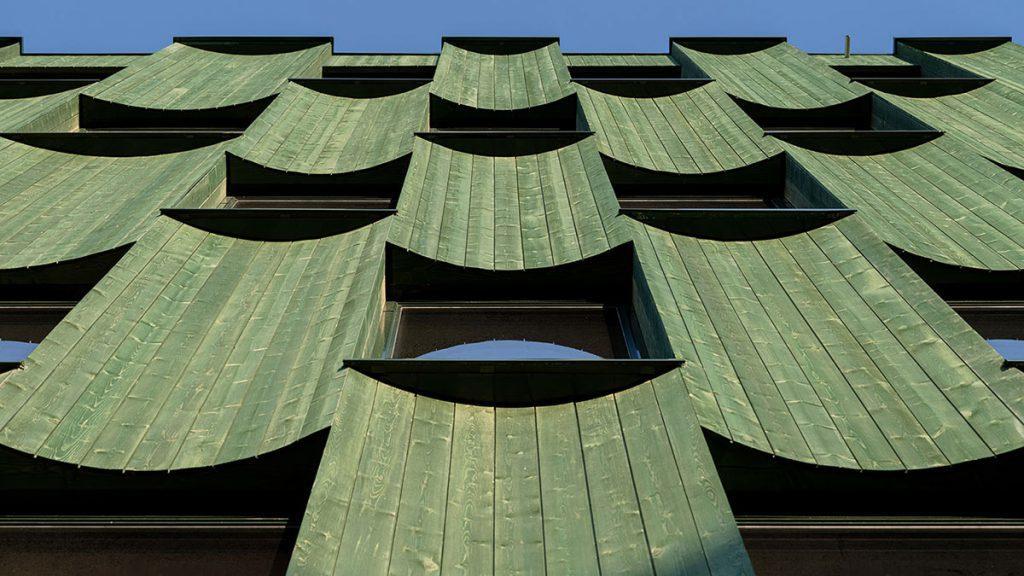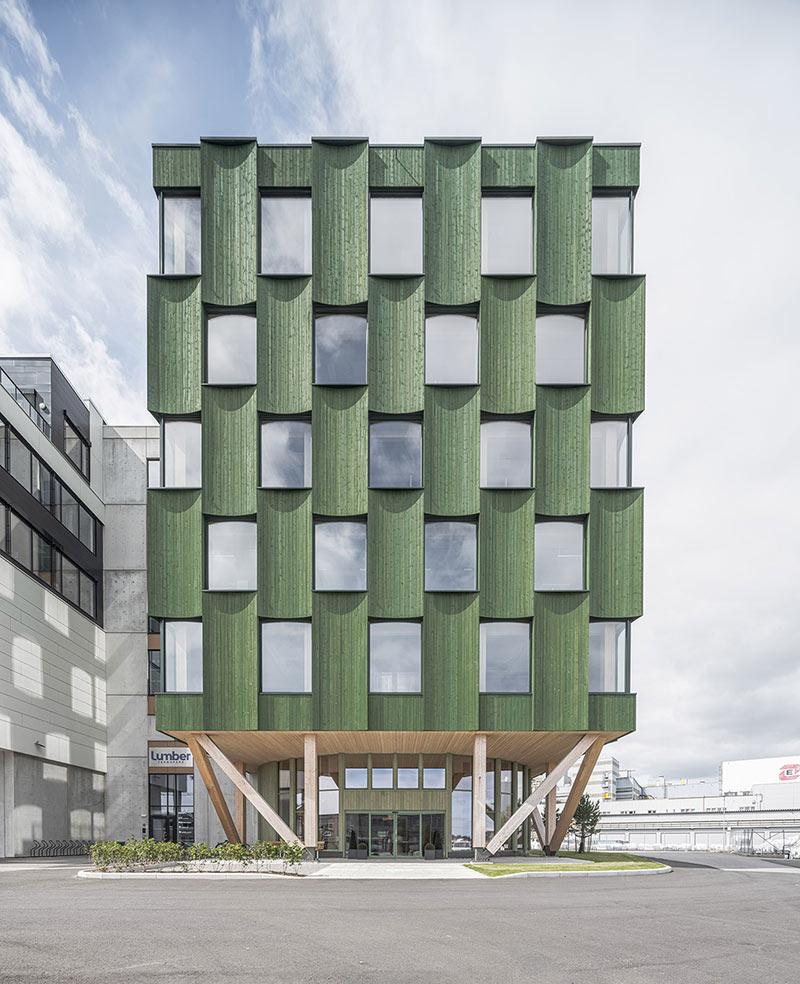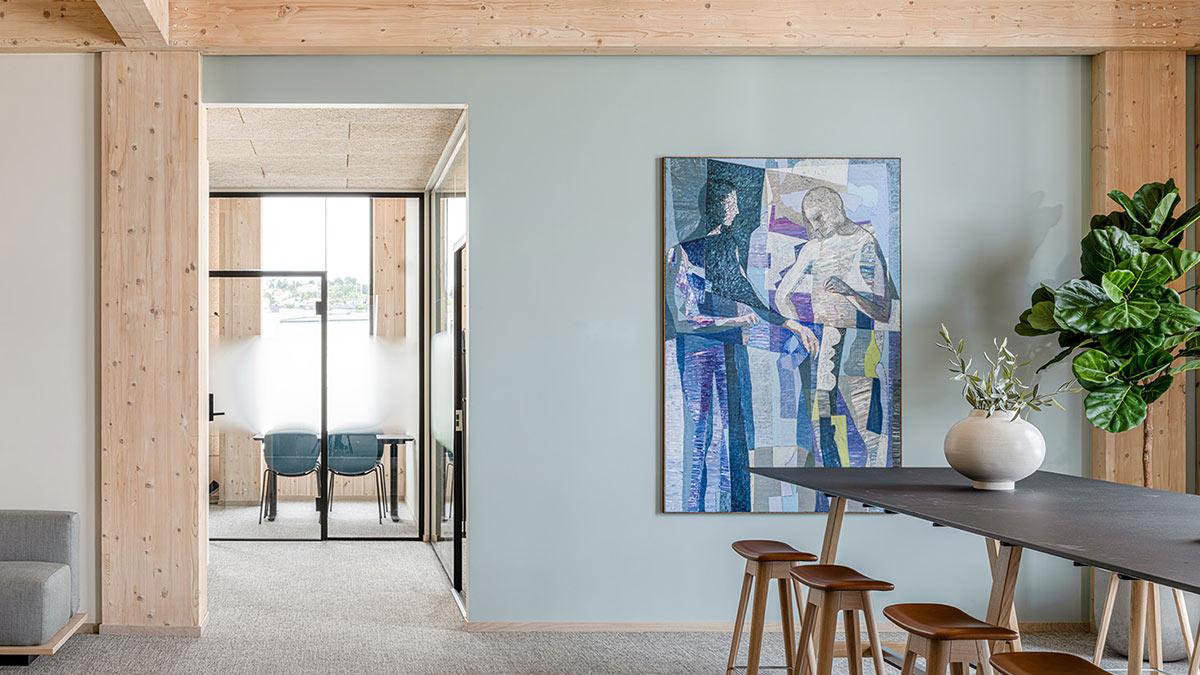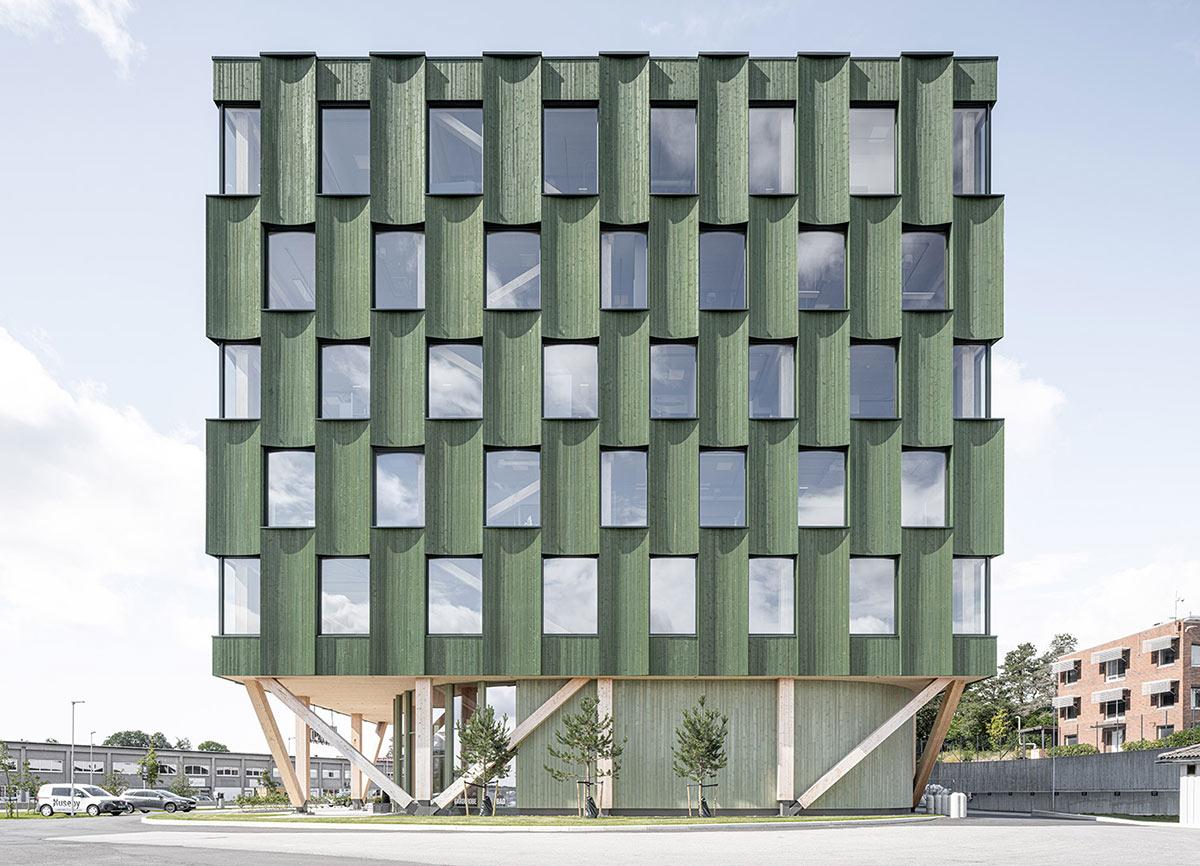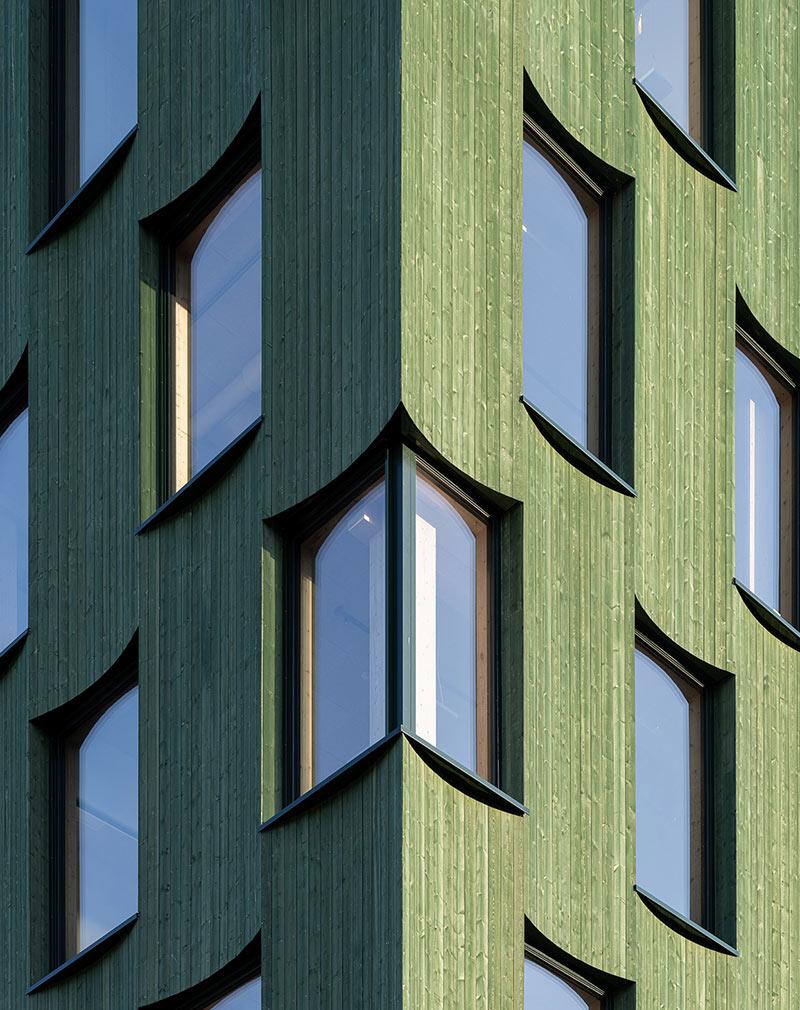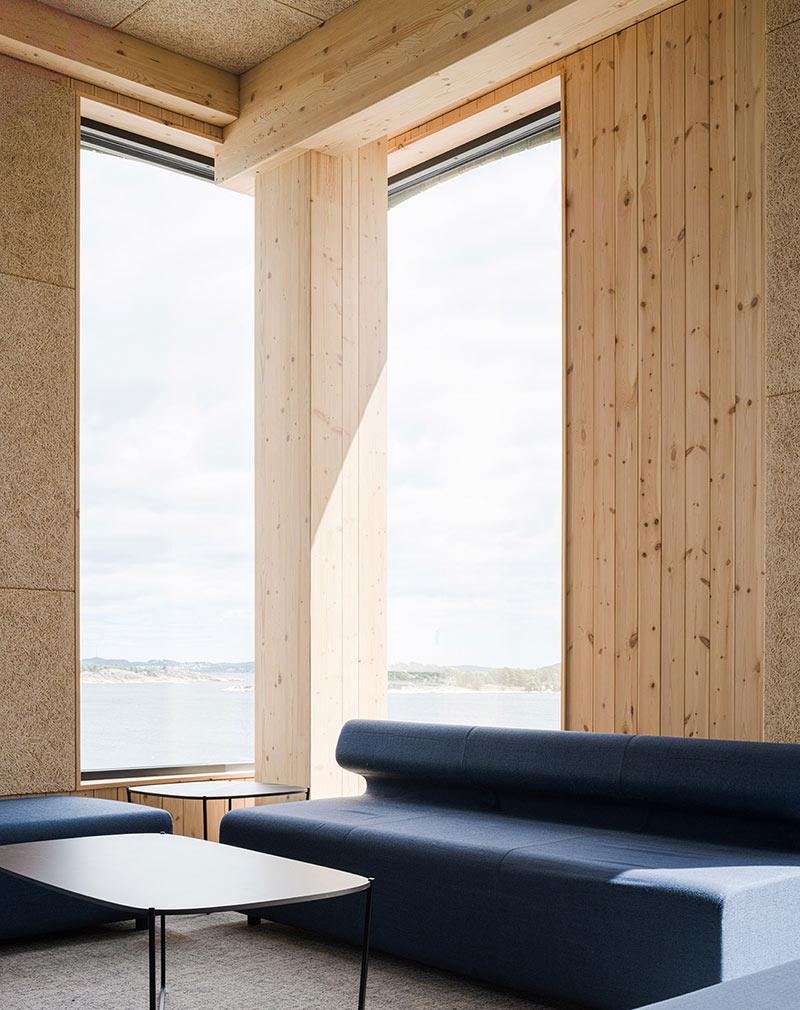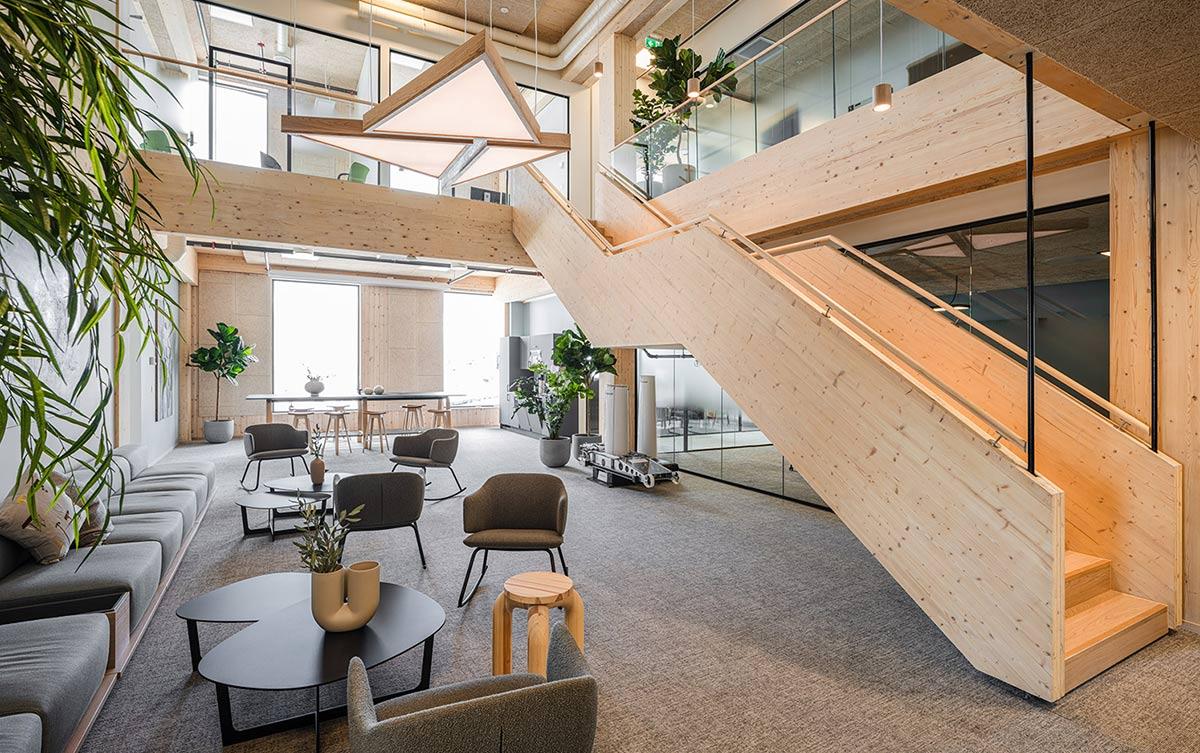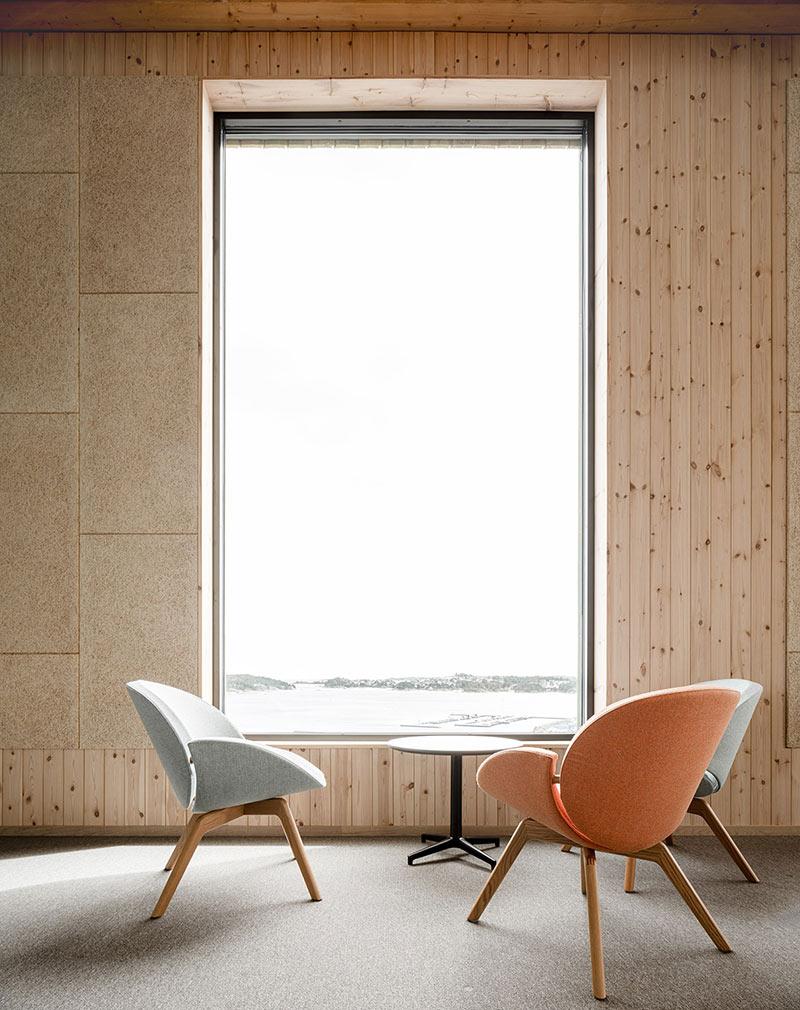An office block with an edge
On the Norwegian coast, the office building Lumber 4 has been constructed in only twelve months – using wood. For the architects at Oslotre, the project shows that timber buildings are not just sustainable, but also economically competitive.
The three-dimensional facade changes its appearance throughout the day. As the sun moves across the sky, light and shadow create a variety of patterns. Each individual section of the facade, made of green-stained pinewood, curves inwards slightly and the straight window ledges cast a rounded shadow onto the wooden panelling below. This lends an aura of plasticity and vitality to the unequal checkerboard of windows and green pinewood.
But that’s not all: “Over time, the paint under the shadow will weather, leading to a changing facade with lighter and darker curved sections,” the architects at Oslotre explain in a description of their timber construction project Lumber 4 in the harbour city Kristiansand in southern Norway.
Constructed in only 12 months
This six-storey office building, commissioned by real estate developer Skeie eiendom, was constructed in “record time” – the whole process only took twelve months. Excluding the concrete work for foundation and service core, the construction costs amount to the equivalent of approx. 6.5 million euros. The slim floor system used for the structure is a CLT-concrete composite. According to the architects, this enabled wide spans and also fulfilled fire safety and noise control requirements.
For this project, the Oslo-based architectural studio was able to benefit from its wealth of experience in timber construction. Besides cabins and houses, the company portfolio also includes apartment blocks, schools and most recently a factory as well. For its project Lumber 4, the company performed several roles – as architects, interior designers and timber construction engineers – depending on the solution required. In recognition of these endeavours, the project was named the Best Mid-Rise Office Building of the Year (5-15 floors) at the Architizer A-Awards in 2024.
Lumber 4 demonstrates that it’s possible to construct competitive timber buildings when compared to concrete and steel structures with the same technical standard.
Oslotre, architectural studio
Finding tenants for this compact office block with 3,890 m² floor space was completed just as rapidly as its construction. The building was 90 percent leased even before completion, the architects say. “Lumber 4 demonstrates that it’s possible to construct competitive timber buildings when compared to concrete and steel structures with the same technical standard.”
A harmonious interior concept
Besides its outward appearance, Lumber 4 also has a remarkable interior concept. Partial exposure of the building technology systems also reveals parts of the wooden floor system in the office space. The ventilation ducts are painted light beige to blend in with the wooden surfaces. And with almost floor-to-ceiling windows, there is a good view of the sea and the islands just off the city’s shores, plus ample natural light.
All load-bearing wooden structures are visible and were even prefabricated with a finished quality. The outer walls are fully clad with white-pigmented spruce panels, while many knots in the timber create a slightly rustic atmosphere. Acoustic panels made of wood wool are used in the kitchenettes and seminar rooms. Their natural flair is ideally suited to the soft cream shades in the materials spectrum.
Simple, timeless, elegant
The benefits of using timber in the interior are explained by the architects: “Wood elements are prominently displayed in the interior, providing warmth in winter and cooling in summer.” Several studies have indeed confirmed the positive effects of this material on human health. As well as this, wood helps people to feel better and therefore also increases their efficiency at work.
Wood elements are prominently displayed in the interior, providing warmth in winter and cooling in summer.
Oslotre, architectural studio
The space between the third and fourth storeys opens up into an impressive atrium with its own lounge area. A staircase made of cross-laminated timber connects the two storeys. The continuous, solid wooden sides of the staircase and the balustrade along the gallery radiate simplicity, continuing the aura of timeless elegance also conveyed by the facade.
Service core at the side
The ground floor with its round design follows the curve of the adjacent road. Solid columns made of glued laminated timber are alternately vertical and slanted, enabling transfer of the incurred loads from the overhanging office floors above while providing easy access to the entrance area.
Lumber 4 docks onto the service core of the neighbouring building, which is reinforced concrete and therefore provides the necessary stability. This connection at the side allows an open and flexible design for the office space.
Norwegian timber construction
Wood has become an integral part of Norway’s architecture in its role as a construction material. Besides stave churches that are almost 1000 years old and also medieval wooden houses, this country in the High North also displays some outstanding modern timber architecture. For instance, Norway is home to Mjøstarnet, the world’s first timber high-rise, which was built in Brumunddal.
Spectacular projects such as the Finansparken in Stavanger, the library in Vennesla and the Kilden Performing Arts Centre have also received global acclaim. And as the latter is situated in Kristiansand, completion of Lumber 4 gives the city its second pioneering timber structure.
Text: Gertraud Gerst
Translation: Rosemary Bridger-Lippe
Photos: Kyrre Sundal
